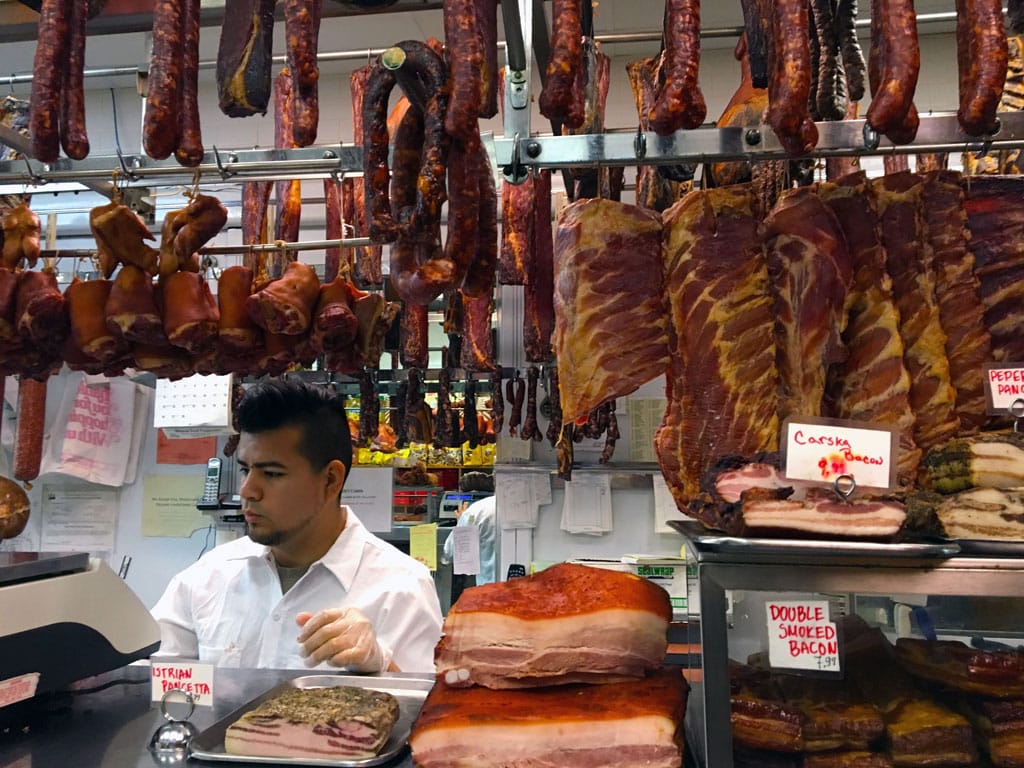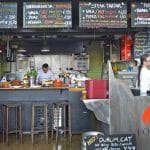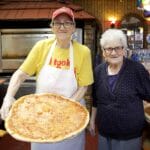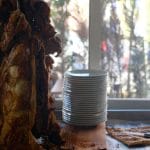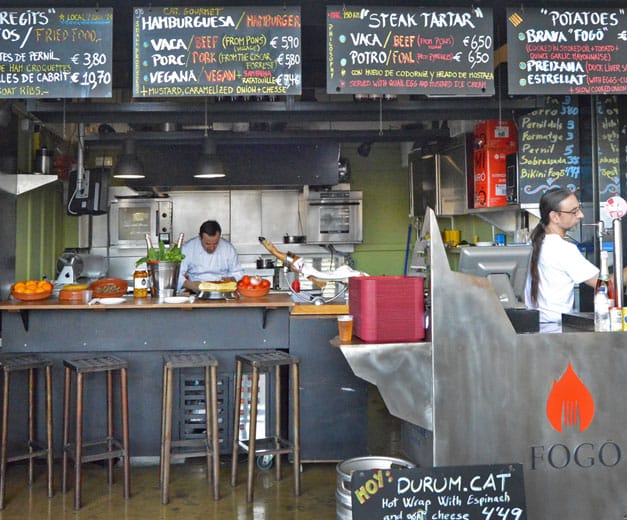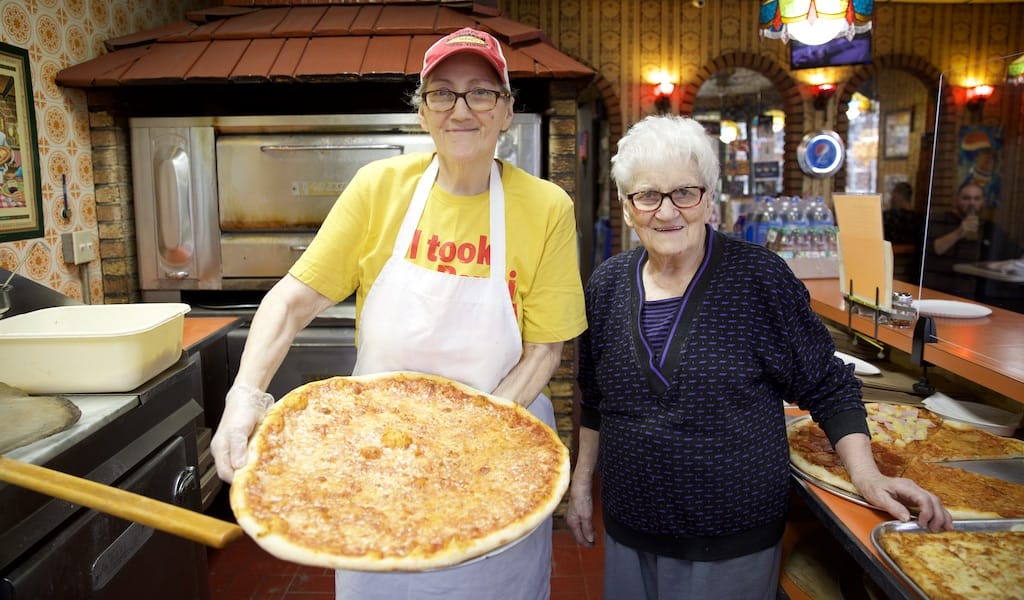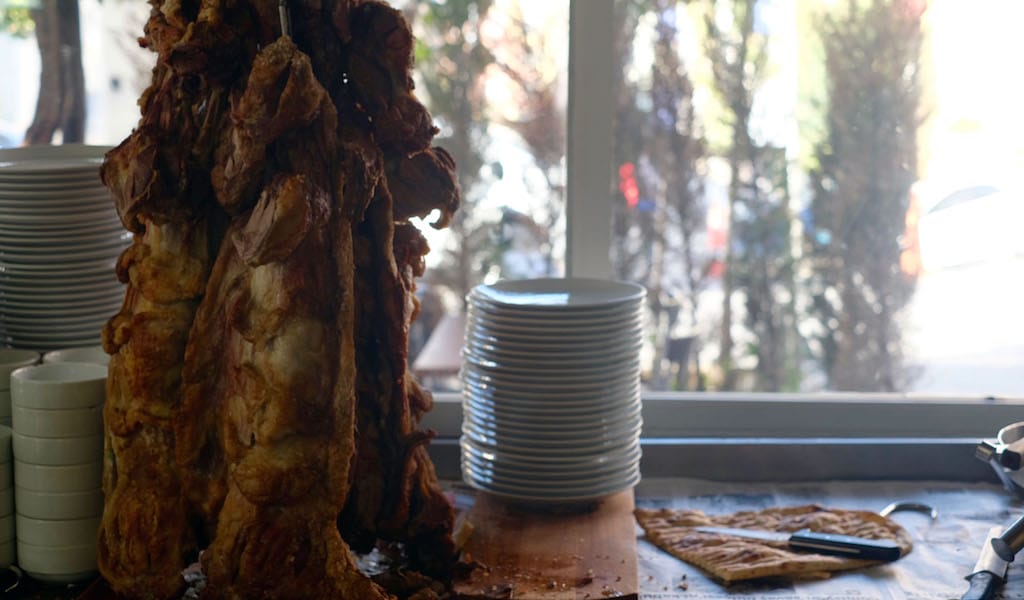Getting ready for a recent New Year’s in Harlem, the Hungarian side of the family was craving a traditional pot of lentils that needed a hunk of smoked pork knuckle. Where to find one with the right flavor in New York City? After some calls and searching, we headed out to Muncan Food Corporation. The address brought us to a storefront along a strip of low-rise brick buildings in Astoria, Queens.
Inside the front door we were blasted with smokehouse aromas. To the left: racks of sausages, pâtés, cold cuts – all kinds of dried and cured delicacies dangling from hooks overhead. To the right: floor-to-ceiling shelves stuffed not only with enough chestnut puree and sour cherries to please the Hungarians, but also jars of the Macedonian pepper mulch called ajvar and boxes of Croatian chocolate-hazelnut Bajaderas. We stared at all the regional styles on display: svelte, heavily smoked čajna kobasica, cured Istrian pig’s neck, spicy Hungarian salami, rows of fresh ćevapi ready to throw on the grill. For those of us who miss the Balkans, it was enough to make us swoon.
From behind the counter an apron-clad employee offered us a cluster of hot pork rinds, what Serbian-speakers call čvarci and Spanish-speakers call chicharron – but whatever you call them, they were salty and sumptuous.
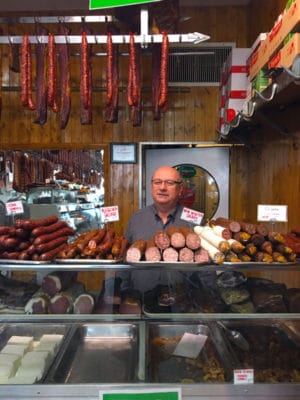 When another customer stepped in behind us, the busy gray-haired clerk recognized him and called out in Serbian, “Ej, kako ide?” How’s it going? “Mnogo bolje sada kada sam ovde!” Much better now that I’m here!
When another customer stepped in behind us, the busy gray-haired clerk recognized him and called out in Serbian, “Ej, kako ide?” How’s it going? “Mnogo bolje sada kada sam ovde!” Much better now that I’m here!
More customers crowded in, speaking a mix of English and various versions of Serbo-Croatian and other languages. Everyone seemed to know each other and to have cast off the anonymity of the city once they entered this temple of meat.
Of the six or seven guys behind the counter, at least half were from the local Latin American community and spoke to each other in Spanish, but when it was time to help a Serbo-hablante customer decide between sausages in the style of Sibiu or Srem, they dropped into impressively fluent Serbo-Croatian.
When it was our turn, we explained we were looking for something that in Hungarian was called csülök, and the clerk switched into Hungarian while producing a glistening, dark red hunk of pork knuckle. We walked out with bags stuffed with a half-dozen meats, jars of ajvar and horseradish and pickles, and after discovering a bottle of quince brandy at a nearby liquor store, called all of our friends to come share in the bounty.
Since that visit, every couple of months we find a reason to go back, speak one of our languages, and come home with a half pound of red wine salami or just a chunk of Hungarian cottage cheese. When I stopped by recently, the crew was getting ready for a charcuterie competition in Flushing. Marko Stefanović, expecting his first child at any moment, sat down with me over a platter of lamb prosciutto and smoked kashkaval cheese to recount the shop’s history.
His grandfather, Tima Munćan, came over in 1976 from the polyglot north Balkan region known as the Banat. A Romanian speaker from the Serbian side of the border, he and his brother, Jonel, studied techniques for smoking, drying and curing meat in what was then Yugoslavia. Two years after moving to New York they took over this shop. On a summer trip back home, Tima’s daughter brought back a husband: Marko’s father, Mike. Jonel Muncan has since passed away, but Tima, Mike and Marko still run the business together. Marko described crying as a child if he wasn’t allowed to come in and said his grandfather at 72 still commutes an hour, six days a week to oversee production. They eat together on Sundays and talk about work. “My grandfather’s talking to my father in Romanian, my father’s answering back in Serbian, and I’m speaking English.”
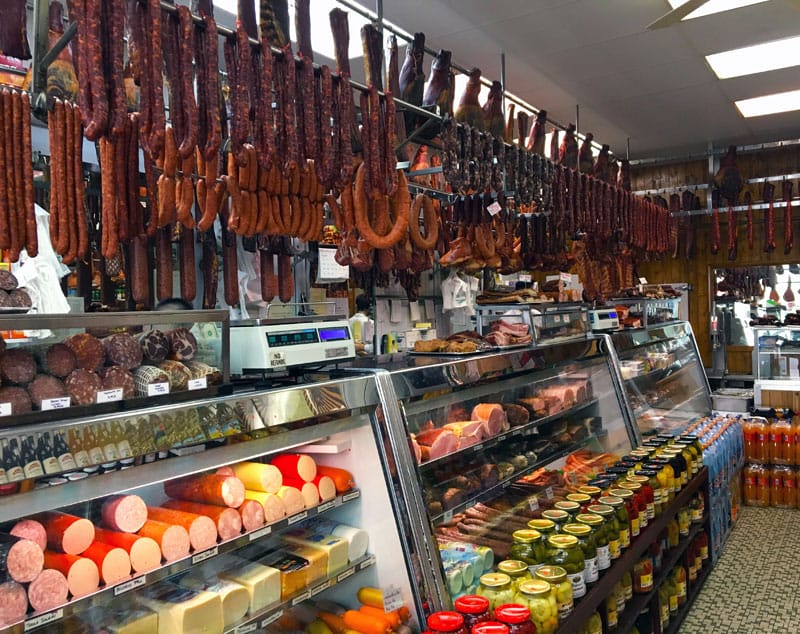
I told him about my experience with the Latino clerk helping us in both Serbian and Hungarian.
“I’ve had guys that come over from Serbia hardly speaking English, and now they speak Spanish. And some of them speak better Romanian than I do. I’ve never asked anyone to learn another language, but the guys who work here just do it. Just to be able to relate to the customers.”
Especially around holidays, Marko said, the place becomes a site of reunions. People who have moved out of state will come back to get what they need, running into old neighbors. Marko described running heavy bags out to cars of impatient customers who have to get to the airport.
“Before we had mail order they would literally fly from California, come to the shop and fly back the same day.” It speaks to the intensity with which Muncan is able to conjure the tastes of home.
“Many of our products started like that: somebody goes to Hungary, smuggles back in a piece of salami, brings it to us and says, ‘I can’t find this anywhere and I miss it. Can you make it?’ My father is someone who can taste something, smell it, and tell you exactly what’s inside.”
Everything they offer is made in a nearby facility in Ridgewood except for the fresh sausage and pork rinds, which are made in the back of the shop. But it feels like a village mesara in Vojvodina. In the jumble of New York, it looks coherent – a place representing the old Banat. But in fact, with traditions from more than a half-dozen countries, and with a staff whose family ties reach from Quito to Bucharest, the shop is also an unmistakable expression of New York City’s most diverse borough.
Published on March 10, 2017
Related stories
July 30, 2015
BarcelonaEls Encants is the kind of magical, exciting market where we arrive having in mind exactly what we need, but after a few hours immersed among objects and voices, we emerge with a bag full of items we never knew we needed or that we could even find. This flea market is one of the…
February 15, 2023
QueensThe eye-catching vintage sign proclaims: “ohn’s Pizzeria.” The letters in “Pizzeria” are in the bold carnivalesque font that decorates many decades-old slice joints in New York. As for “ohn’s,” it’s missing a one-of-a-kind flourishing cursive capital letter. “The J fell off,” says Susan Bagali, while ladling sauce onto a Sicilian pie behind the counter. “I…
December 5, 2017
IstanbulIt was 10 a.m. on a bright, crisp Monday morning as we blasted down a miraculously traffic-free stretch of Istanbul’s E-5 highway. We were en route to Bağcılar, a jam-packed outer district home to three quarters of a million people. Awaiting us was an ambitious breakfast of büryan kebabı, delectable lamb meat roasted to perfection…







































